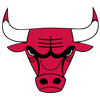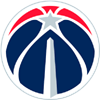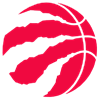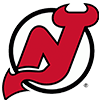This year's rookie class features exciting players who could make an immediate impact, and others who need a few breaks to have a fantasy role. Here's the outlook for this season's top rookies.
Players are ranked within each position by projected fantasy value for 2023.
For Rookie Dynasty Rankings, go here.
Quarterback
Anthony Richardson, Colts
6-4, 244 - Florida / 1st Round (4th Overall)
Richardson is one of the most polarizing QB prospects in years. His performance at the combine was stunning as he showed a rare blend of arm strength and size-adjusted athleticism (a 4.43 40 at his size is incredible). But it's hard to ignore the statistical flaws — he completed just 54.7 percent of his passes at 7.9 YPA in 22 collegiate games. While apologists point to his youth (21 in May) and lack of supporting talent at Florida, there isn't much precedent for that production translating to NFL success. He could start Week 1 and at least can contribute as a runner, but Richardson's arm needs time to develop.
Bryce Young, Panthers
5-10, 204 - Alabama / 1st Round (1st Overall)
The 2021 Heisman Trophy winner was a prolific college quarterback, throwing for 79 touchdowns in two seasons as a starter while showing excellent accuracy and anticipation. He isn't a slam-dunk prospect, though, as there isn't much precedent for a QB of his stature succeeding in the NFL. And unlike other recent undersized QBs, he isn't especially fast. While he likely will
This year's rookie class features exciting players who could make an immediate impact, and others who need a few breaks to have a fantasy role. Here's the outlook for this season's top rookies.
Players are ranked within each position by projected fantasy value for 2023.
For Rookie Dynasty Rankings, go here.
Quarterback
Anthony Richardson, Colts
6-4, 244 - Florida / 1st Round (4th Overall)
Richardson is one of the most polarizing QB prospects in years. His performance at the combine was stunning as he showed a rare blend of arm strength and size-adjusted athleticism (a 4.43 40 at his size is incredible). But it's hard to ignore the statistical flaws — he completed just 54.7 percent of his passes at 7.9 YPA in 22 collegiate games. While apologists point to his youth (21 in May) and lack of supporting talent at Florida, there isn't much precedent for that production translating to NFL success. He could start Week 1 and at least can contribute as a runner, but Richardson's arm needs time to develop.
Bryce Young, Panthers
5-10, 204 - Alabama / 1st Round (1st Overall)
The 2021 Heisman Trophy winner was a prolific college quarterback, throwing for 79 touchdowns in two seasons as a starter while showing excellent accuracy and anticipation. He isn't a slam-dunk prospect, though, as there isn't much precedent for a QB of his stature succeeding in the NFL. And unlike other recent undersized QBs, he isn't especially fast. While he likely will start Week 1, his transition to the NFL coupled with an underwhelming team context could lead to a rocky rookie campaign.
C.J. Stroud, Texans
6-3, 213 - Ohio State / 1st (2nd)
Stroud enters the NFL as a two-year collegiate starter who carved up defenses for 40-plus touchdowns each season. The knock is that he played with elite receivers in an offense that doesn't easily translate to the NFL. Still, Stroud has size, accuracy and enough arm strength to thrive as the Texans' franchise QB. His rushing production at OSU doesn't stand out, but he moves effectively in and out of the pocket, which could lead to more running in the NFL. Stroud is expected to start Week 1, though the Texans said he'll have to earn the job in camp.
Will Levis, Titans
6-4, 229 - Kentucky / 2nd (33rd)
The Titans traded up to draft Levis, who unexpectedly fell out of the first round after being considered a top-10 lock, and now have a potential successor to Ryan Tannehill. Levis has a cannon, but arm strength and throwing a catchable deep ball are different things. He'll have time this season to resolve his downfield accuracy issues, though as a 24-year-old rookie his development clock is already ticking. If he plays this year, he perhaps could lean on his underrated rushing ability while he refines his passing skills.
Hendon Hooker, Lions
6-4, 208 - Tennessee / 2nd (68th)
Hooker piloted one of college football's most explosive offenses the last two seasons with a 58:5 TD:INT at 9.6 YPA while showing good deep accuracy and decision-making. Expectations, however, are on ice until 2024, as he'll rehab a torn ACL most of this season. Advanced age is less of a concern for quarterbacks than other positions, but he's already an older prospect at 25, and possibly not seeing the field until he's 26 puts more pressure on him to develop quickly.
Running Back
Bijan Robinson, Falcons
5-11, 215 - Texas / 1st (8th)
A five-star talent turned All-American rusher and now a top-10 pick — this is the closest thing to a slam-dunk running back prospect since Saquon Barkley. Robinson averaged 6.3 YPC with workhorse volume in three college seasons and landed in a great spot with a Falcons offense that was second in the league in run-play rate last season. With last year's coaching staff — and QB concerns — returning, the run-heavy offense should continue. Second-year RB Tyler Allgeier looms as a threat to steal touches, but Robinson is a better runner and receiver. He'll cost a first-round pick in fantasy drafts, though.
Jahmyr Gibbs, Lions
5-9, 199 - Alabama / 1st (12th)
What Gibbs lacks in between-the-tackles ability he more than makes up for with speed and receiving skills. He averaged 5.6 YPC in college, and his 9.0 YPT was stellar for a running back. With 4.36 speed, his explosiveness should carry over to the NFL. David Montgomery might be the better option in goal-line and short-yardage situations, which is a consideration for investors, but Gibbs has the skill set to be productive on a per-touch basis and should draw enough targets to warrant picking at ADP.
Zach Charbonnet, Seahawks
6-0, 214 - UCLA / 2nd (52nd)
It wasn't surprising that Charbonnet was drafted in the second round, but Seattle picking him after it took Kenneth Walker last year was unexpected. Charbonnet is an excellent pure runner with two 1,000-yard collegiate seasons on his resume. His frame and tools (4.53 speed, above average lower body explosiveness) make him a solid prospect, and he has more proven receiving ability (75 receptions on 101 targets) than Walker did as a rookie. Walker is the starter, but Charbonnet likely will be involved. Expecting Charbonnet to supplant Walker is wishful thinking, absent an injury.
Devon Achane, Dolphins
5-9, 188 - Texas A&M / 3rd (84th)
Achane's 4.32 speed turns heads, but make no mistake: he's not a track star playing football; he's a football player with track speed. Achane took 196 carries for 1,102 yards and eight scores last season and caught 36 of 48 targets with three receiving scores. His frame likely prevents him from being a workhorse in the NFL, but he could be an explosive role player in an offense that already stresses defenses with speed all over the field. Achane can be a high-efficiency producer but likely with middling volume this season.
Tank Bigsby, Jaguars
6-0, 210 - Auburn / 3rd (88th)
Bigsby is not a standout athlete with 4.56 speed at 210 pounds, but he is a better prospect than surface-level stats indicate. He had 20 touchdowns and more than 2,000 rushing yards the last two seasons behind a bad offensive line against top competition in the SEC. Bigsby provides depth with Travis Etienne in a workhorse role and can handle between-the-tackles work and short-yardage situations, which gives him some intrigue as a late-round target.
Chase Brown, Bengals
5-9, 209 - Illinois / 5th (163rd)
Brown, 23, enters the NFL with 676 carries and 58 receptions on his college resume. He did well with that volume, averaging 5.3 YPC and catching 83 percent of his targets. He has 4.4 speed and legitimate lower-body explosiveness on a strong frame. Joe Mixon is the starter, so Brown's opportunities will be limited (especially in the red zone), but neither Trayveon Williams nor Chris Evans has shown to be a major barrier to Brown filling the snaps vacated by the departed Samaje Perine and the No. 2 role.
Kendre Miller, Saints
5-11, 215 - TCU / 3rd (71st)
Miller's impressive production (6.7 YPC on 361 carries, 26 rushing touchdowns) and film was enough to get him drafted in the early third round, despite a knee injury preventing him from pre-draft testing. He is proficient at gaining yards after contact and also has some explosiveness (21 rushes of 15-plus yards last season). His path to snaps is blocked by Alvin Kamara and Jamaal Williams, and he doesn't project as a plus pass-catcher, so it might take a Kamara injury or suspension for Miller to be relevant this season.
Roschon Johnson, Bears
6-0, 219 - Texas / 4th (115th)
David Montgomery's departure leaves 600 snaps up for grabs in the Chicago offense, which gives Johnson an opportunity to carve out a role. However, QB Justin Fields' rushing must be factored into the equation. While the Bears led the league last season in rushing rate, they were last in the percentage of team rushes for running backs. Johnson didn't have even 100 carries in any of his final three college seasons, and even if you forgive that he was Bijan Robinson's backup, building a case that he will have a fantasy impact seems more like wish-casting.
Zach Evans, Rams
5-11, 202 - Mississippi / 6th (215th)
Evans entered college with five-star pedigree and was efficient (6.9 YPC) in all three seasons across two stops (TCU) but never exceeded 144 carries or 1,000 yards in any season. He was expected to dominate the work at Ole Miss post-transfer, only to be lapped by true freshman Quinshon Judkins once he got there. The lack of volume combined with middling athletic testing at Ole Miss' pro day sent Evans' stock tumbling. But he landed in a backfield with Cam Akers and little else, and Sean McVay's erratic tendencies with running backs could helps Evans earn playing time as a rookie.
Israel Abanikanda, Jets
5-10, 216 - Pittsburgh / 5th (143rd)
Densely built with impressive college production, Abanikanda stamped his prospect bonafides with an impressive pro day (4.44 40, 41-inch vertical). If Breece Hall, who is returning from ACL surgery, is out to begin the year or on a snap count, backup Michael Carter likely would not prevent Abanikanda from taking early down or short-yardage work. Abanikanda's receiving is a question, however. He has his work cut out for him, but late-round running backs have found success and he has the traits to be the next.
Deuce Vaughn, Cowboys
5-5, 179 - Kansas State / 6th (212th)
There aren't many (any?) backs in the league at Vaughn's size. There also aren't many backs who produced like Deuce in college. He totaled 43 touchdowns and 116 receptions in three seasons with workhorse rushing volume — 651 carries, including 293 last season (5th in the nation). The frame precludes Vaughn from an every-down role now, but he's an elusive runner with the pass-catching chops to be part of a backfield rotation. Dallas' depth behind Tony Pollard is shaky, so while Vaughn is a longshot, don't write him off just yet.
Eric Gray, Giants
5-10, 207 - Oklahoma / 5th (172nd)
Saquon Barkley is not giving up many snaps when healthy. Still, the Giants needed depth and Gray offers that with a little pass-catching upside as well. He ran a 4.62 40 at his pro day, but a 37.5-inch vertical at least shows his explosiveness. Gray also caught 81 percent of his 106 college targets. He doesn't profile as a future starter but could break camp as the No. 2 back. If nothing else, file away Gray for in-season waivers.
Tyjae Spears, Titans
5-10, 201 - Tulane / 3rd (81st)
Spears generated a lot of winter draft buzz after 1,581 yards (6.9 YPC) and 19 touchdowns last season. The hype reached a fever pitch when he showed well at the Senior Bowl. But middling athletic testing (4.52 40) burst that bubble a bit, and landing in Tennessee was a tough development for his short-term value. Derrick Henry is still in his prime and few snaps are up for grabs in the backfield. Spears lacks a standout trait to change that dynamic.
Chris Rodriguez, Commanders
6-0, 217 - Kentucky / 6th (193rd)
A bruising back with 4.51 pro day speed and 33 touchdowns in college, Rodriguez is an interesting fit in Washington. He has similar traits to likely starter Brian Robinson, who isn't necessarily locked in for a big role after averaging 3.9 YPC last season. Toss in coach Ron Rivera's wavering commitment to Antonio Gibson and suddenly it's plausible for the sixth-round rookie to carve out a role in D.C. Just don't expect many receptions from Rodriguez after he had only one collegiate season with double-digit catches and finished with 20 career catches for 116 yards.
DeWayne McBride, Vikings
5-10, 215 - UAB / 7th (222nd)
McBride was highly productive at UAB, totaling 3,523 yards and 36 touchdowns in 31 games. He led the nation with 7.4 YPC last season, but he's unproven as a receiver (5 career receptions) and a hamstring injury kept him from pre-draft testing. McBride needs some good fortune to have a fantasy impact this season. Namely, he needs Dalvin Cook off the roster. A Cook trade (or release) would vault Alexander Mattison to the starting role, leaving McBride to battle for the backup job.
Wide Receiver
Jordan Addison, Vikings
5-11, 173 - USC / 1st (23rd)
Minnesota will continue to test the limits of how many targets Justin Jefferson can handle, but he can't have a 100 percent share and Adam Thielen's departure opens a role for which K.J. Osborn has proven he's underqualified. Enter Addison, an undersized technician who turned in a Biletnikoff Award-winning season before he turned 20. Maybe his physical limitations negate true superstar potential, but Addison has the ball skills, separation and after-the-catch ability to portend a smooth transition. His expected role as the WR2 gives him legitimate redraft value as a rookie.
Quentin Johnston, Chargers
6-4, 212 - TCU / 1st (21st)
Johnston is an explosive boundary receiver who could be a home-run threat for Justin Herbert. He's not a perfect prospect — he had plenty of drops in college, his 40-time (4.51) was average and his route tree is limited. However, Johnston showed time and again that he can get open downfield and do damage with the ball in his hands. There's plenty of competition for targets in Los Angeles, but the rookie should be helpful as a second downfield threat across from fellow 6-4 wideout Mike Williams.
Zay Flowers, Ravens
5-9, 182 - Boston College / 1st (22nd)
Despite being undersized, Flowers carried the BC offense for four years, topping out with 78 grabs for 1,0777 yards and 12 touchdowns (8.2 YPT) last season. He played mostly on the outside and has 4.42 speed, but his frame will make it a challenge for him to stick there. Baltimore has TE Mark Andrews and WR Rashod Bateman and added WR Odell Beckham this offseason, so Flowers might only be the No. 4 option in the passing game this season. Even if the Ravens throw more with a new offense, Flowers isn't likely to draw many targets early in the year.
Jaxon Smith-Njigba, Seahawks
6-0, 197 - Ohio State / 1st (20th)
Smith-Njigba was the first receiver off the board despite barely playing last season due to a hamstring injury. That's because of his 2021 season with 1,606 yards and nine touchdowns on 112 targets, including his record-setting 15-347-3 Rose Bowl performance with star teammates Chris Olave and Garrett Wilson sitting out. Smith-Njigba is expected to play the slot, but how many targets that offers is uncertain in an offense with DK Metcalf and Tyler Lockett as the primary receivers. Smith-Njigba is still a premier dynasty target, but his fifth-round summer ADP in redraft might be an overpay.
Rashee Rice, Chiefs
6-1, 205 - SMU / 2nd (55th)
There's a lot up for negotiation behind Travis Kelce in Kansas City with JuJu Smith-Schuster and Mecole Hardman gone. Skyy Moore is suited for the slot and Marquez Valdes-Scantling lines up all over the formation, leaving Rice with a shot to be an outside target for Patrick Mahomes alongside the oft-injured Kadarius Toney. It took Rice until his age-22 season to produce 1,000 yards, but he has good size and leaping ability (41-inch vertical). If he locks in a starting role at one of the boundary receiver spots, he'll be a profitable fantasy pick.
Jonathan Mingo, Panthers
6-2, 220 - Mississippi / 2nd (39th)
Carolina is tearing things down to the studs and Mingo is clearly expected to be part of the rebuild. Although Mingo never led his team in receiving in any of his four college seasons, he has untapped potential with his standout physical tools highlighted by 4.46 speed on a big frame. The lack of college production, though, raises concern about a fast transition. Outside reps are up for grabs in Carolina, and the competition (DJ Chark, Terrace Marshall) is not formidable.
Jalin Hyatt, Giants
6-0, 176 - Tennessee / 3rd (73rd)
A breakout junior year vaulted Hyatt onto the draft radar after two anonymous seasons in Knoxville with 41 combined catches. Last season, though, Hyatt reeled in 15 touchdowns and averaged 18.9 YPR on 91 targets, becoming a legit deep threat. The pre-draft microscope was somewhat unkind; he's underweight for his height and while he has good speed, his 4.40 40 is not an outlier for a receiver this thin. Hyatt has a narrow route tree and alignment projection, but the Giants' depth chart isn't overly imposing either.
Jayden Reed, Packers
5-11, 187 - Michigan State / 2nd (50th)
Outside of Christian Watson, there's little that's nailed down in Green Bay. It's a crowded group of receivers filled with rookies and second-year players. Reed had an impressive, eight-TD season as a true freshman at Western Michigan and chipped in a 1,000-yard season at MSU in 2021, checking boxes for being an early producer and dominating Power 5 competition. His athleticism (4.45 40, 33-inch vertical) is average, so he'll need to get by on ball skills and route running. He has a strong chance to play in three-wide sets this year.
Marvin Mims, Broncos
5-11, 183 - Oklahoma / 2nd (63rd)
Mims went from being a low-volume, high-efficiency target as a freshman to a big-play threat who can carry a passing game as a junior. He averaged 19.5 yards per catch on 123 career receptions, and the 4.38 speed he showed at the combine gives his game a chance to translate to the pros. Denver's passing game should be rejuvenated under new coach Sean Payton, and while Tim Patrick and KJ Hamler are obstacles to immediate playing time, both are flawed and have lengthy injury histories. Mims' path to a role is clearer than his ADP suggests.
Nathaniel Dell, Texans
5-8, 165 - Houston / 3rd (69th)
Nearly any third-round receiver would have opportunity in the Texans' unimpressive WR corps. Instead, they took Dell, an older receiver prospect who is perilously small by NFL standards and doesn't have the athleticism (4.49 40) to compensate. He dominated his last two seasons of college, but it took until his age-21 season to get there, making his pro prospects questionable. Houston isn't loaded at receiver and yet Dell could still be buried on the depth chart.
Josh Downs, Colts
5-9, 171 - North Carolina / 3rd (79th)
Although undersized, Downs carried UNC's passing game his last two seasons and even led the nation in target share in 2021 (39.9 percent, 11.4 Tar/G). He was efficient with heavy volume, notching a 73 percent catch rate and 8.9 YPT his last two seasons. With Parris Campbell gone, Downs could play in three-wide sets. Snaps should be there; it's just a matter of the chemistry he develops with QB Anthony Richardson and how run-heavy the Indianapolis offense is this season.
Cedric Tillman, Browns
6-3, 213 - Tennessee / 3rd (74th)
Tillman was expected to be the top Vols receiver last year, but an ankle injury hampered much of his season. His 2021 season, though, featured 1,081 yards and 12 touchdowns, showing his upside. Tillman's size and catch radius can make him a red-zone target, though he has only average speed (4.54 40). Amari Cooper, Elijah Moore and Donovan Peoples-Jones are ahead of him on the depth chart, but Tillman has long-term potential.
Puka Nacua, Rams
6-1, 206 - BYU / 5th (177th)
After Cooper Kupp, the Rams have little at receiver. Nacua isn't a prime-time prospect given his average athleticism and injury history, but he could develop into a role player. His last two seasons at BYU, Nacua caught 91 of 141 targets at 10.1 YPT while lining up all over the formation and even took some rushing work (25 carries, 209 yards, five TD in 2022). A Van Jefferson bounce-back, along with Kupp's return, would take up a lot of the targets in the Rams offense, but keep an eye on Nacua potentially climbing a weak depth chart.
Charlie Jones, Bengals
5-11, 175 - Purdue / 4th (131st)
Jones was mired in bad offenses much of his collegiate career and his numbers suffered. Then he erupted for an FBS-leading 110 catches last season, albeit at 24 years old. The Bengals are set at receiver, though Tyler Boyd's long-term future is uncertain. Boyd is a slot specialist and that's where Jones profiles best. If the team moves on from Boyd next year, Jones could stake his claim as Joe Burrow's No. 3. This year, his opportunities might be few.
Tight End
Michael Mayer, Raiders
6-4, 249 - Notre Dame / 2nd (35th)
Mayer was the consensus top tight end entering the combine before a disappointing performance, including a 4.70 40, reshuffled the rankings. But Mayer might have a better fantasy opportunity than the two tight ends drafted ahead of him, as the Raiders need to replace Darren Waller. Mayer's skill set is different from Waller's, but he's a strong blocker and was the engine of the Notre Dame passing attack the last three seasons, including a 31 percent target share in 2022. Austin Hooper was signed for veteran insurance, but Mayer is the tight end of the future in Vegas, and possibly the tight end of the present as well.
Dalton Kincaid, Bills
6-4, 246 - Utah / 1st (25th)
Kincaid isn't equipped for most in-line TE duties, but his receiving ability made him the first tight end off the board. He is a smooth route runner who can do damage up the seam and is also solid in the red zone, where he scored 12 of his 16 TDs the past two seasons. Buffalo could use him as a big slot receiver, as he's unlikely to fully displace Dawson Knox in one tight-end sets. He has fantasy potential, but his skill set does not guarantee large snap shares from the jump.
Sam LaPorta, Lions
6-3, 245 - Iowa / 2nd (34th)
Iowa's struggles on offense last season didn't stop LaPorta from putting himself on the draft map. He caught 58 passes for 657 yards on 94 targets. That might not jump off the page, but he led the team in targets by 35 and his 7.0 YPT bested the team YPA by 1.2 yards. A great combine performance showed upper-tier speed (4.59), quickness and burst. Rookie transitions are tough for tight ends, but LaPorta is talented and doesn't have much competition for the starting job in Detroit.
Luke Musgrave, Packers
6-6, 253 - Oregon State / 2nd (42nd)
Musgrave comes to the NFL with just 47 college receptions, two touchdowns and 7.53 YPT, so how did he garner such draft capital? Well, having a prototypical frame, 4.61 speed and impressive leaping ability certainly helped. Musgrave is big enough to be an in-line blocker and has the athleticism to develop into a factor in the passing game. It might take time for his tools to translate given his limited college experience (20 games), but considering Green Bay's thin tight end depth chart, Musgrave might get to learn on the job as a rookie.
Tucker Kraft, Packers
6-5, 254 - South Dakota State / 3rd (78th)
The Packers double-tapped tight end, following their Luke Musgrave pick with Kraft a round later. Like Musgrave, Kraft is a bigger tight end with solid athleticism. Kraft has Musgrave beat in terms of college production — his 2021 season eclipsed Musgrave's career — albeit at a lower level of competition. Kraft's transition from the FCS to the NFL in an offense with a new starting quarterback leaves him off the redraft radar this year.
Luke Schoonmaker, Cowboys
6-5, 251 - Michigan / 2nd (58th)
Dalton Schultz' departure made tight end a draft need for the Cowboys. Is Schoonmaker the long-term answer? He turns 25 in September, making him older than second-year teammates Jake Ferguson and Peyton Hendershot. Schoonmaker tested as a solid athlete with a playable tight-end frame and was efficient on a per-target basis in college with 8.1 YPT and a 69 percent catch rate. He doesn't have any one dominant tool, so while neither Ferguson nor Hendershot is a star, don't assume Schoonmaker will earn the starting role this season, let alone develop into a fantasy play.
Brenton Strange, Jaguars
6-4 / 253 / Penn State / 2nd (61st)
Strange has some receiving ability — near 70 percent catch rate with 11 touchdowns in college — but Evan Engram is coming off a strong year, which means the immediate path to playing time will come through blocking. His expected role likely will keep him off the redraft radar this year. Strange's athleticism (92nd percentile broad jump, 4.70 40) and college production suggest he could develop into a starter down the line, though, so keep him on the dynasty radar.
--
Did you know you can bet on the NFL in most states? You can sign up for the best sports betting sites and bet on anything NFL. In addition, you can get thousands in bonuses by redeeming various sportsbook promo codes that give users bonus bets upon registration.





































